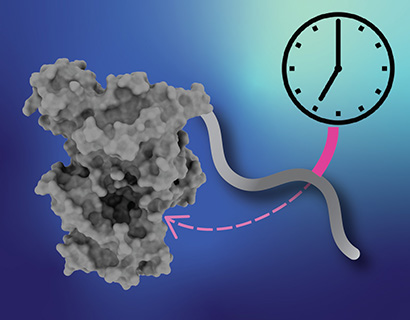- People with delayed sleep phase disorder (DSPD) are often described as ‘night owls‘ for their inability to fall asleep at night
- Research conducted in 2017 identified a genetic mutation responsible for causing DSPD in people
- A recently published study has discovered the molecular mechanism behind the mutation’s effects
The phrase ‘night owl’ denotes people who stay awake till late in the night and wake up late in the morning. Science has found these people suffer from a condition called delayed sleep phase disorder (DSPD). It is believed that DSPD results in dysregulation of the body’s circadian rhythm.
Circadian rhythm is the body’s internal clock that regulates the sleep-wake cycle. These 24-hour rhythms also control many behavioral and psychological processes in our bodies. Circadian clocks are generally dependent on environmental cues such as daylight and darkness.
Delayed Sleep Phase Disorder Linked to Genetic Mutation
A dysregulation or disruption of the daily cycle results in altered sleeping patterns such as DSPD. People with this sleeping disorder have a longer than normal clock cycle, therefore, making them stay up late and wake up late.
In 2017, scientists discovered a genetic mutation that alters a component of the biological clock and results in the night owl sleep disorder. The gene CRY1, a critical regulator of the circadian cycle, was identified as the culprit.
Now, scientists at UC Santa Cruz have discovered the molecular mechanism behind this mutation and a potential treatment option for those affected by DSPD. They published their findings in the journal Proceedings of the National Academy of Sciences.
This mutation has dramatic effects on people’s sleep patterns, so it’s exciting to identify a concrete mechanism in the biological clock that links the biochemistry of this protein to the control of human sleep behavior
Carrie Partch, professor of chemistry and biochemistry at UC Santa Cruz
How Does CRY1 Affect the Circadian Clock?
Professor Carrie and her team found that the CRY1 mutation affected a clock protein called cryptochrome. Cryptochrome binds to a clock protein complex to start a feedback loop that controls the length of the clock.

The mutation causes a small portion of the cryptochrome’s ‘tail’ to get left out. The protein complex has a ‘pocket’ where the ‘tail’ portion of the cryptochrome generally attaches and regulates the cycle length. However, the mutation results in cryptochrome binding more tightly to the complexes and lengthening the cycle each day
How tightly the complex partners bind to this pocket determines how quickly the clock runs. This tells us we should be looking for drugs that bind to that pocket and can serve the same purpose as the cryptochrome tail
Carrie Partch, professor of chemistry and biochemistry at UC Santa Cruz
Partch’s lab is currently working on developing treatments that can target the ‘pocket’ and eventually help shorten the circadian clock in those affected by delayed sleep phase disorder.
Reference:
Parico, Gian Carlo G., et al. “The Human CRY1 Tail Controls Circadian Timing by Regulating Its Association with CLOCK:BMAL1.” Proceedings of the National Academy of Sciences, 2020, p. 201920653., doi:10.1073/pnas.1920653117.
Patke A, Murphy PJ, Onat OE, Krieger AC, Özçelik T, Campbell SS, Young MW (April 2017). “Mutation of the Human Circadian Clock Gene CRY1 in Familial Delayed Sleep Phase Disorder”. Cell. 169 (2): 203–215.e13. doi:10.1016/j.cell.2017.03.027




